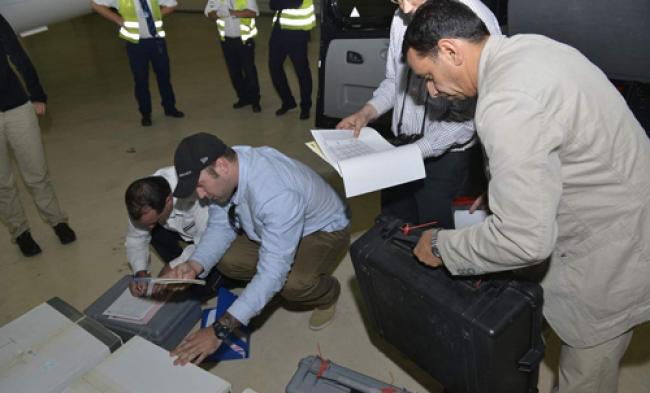09 Oct 2013

“The role of (UN) Member States will be critical,” he said in a letter to the UN Security Council outlining his plans for the Joint Mission with theOrganisation for the Prohibition of Chemical Weapons (OPCW) to carry out last month’s Council resolution on the elimination of Syria’s chemical weapons material and equipment, scheduled for completion by Jun 30, 2014.
“I call upon Member States to offer their full support to the work of the Joint Mission, including through the provision of financial, material, technical and operational assistance,” the Secretary-General added of the mission, which will be headed by a civilian Special Coordinator whom he will appoint in coordination with OPCW Director-General Ahmet Üzümcü.
“Given the operating environment, the Joint Mission will establish a ‘light footprint’ in Syria, only deploying to Syria those personnel whose presence is necessary in the country to perform their tasks,” Ban noted, adding that a staging area and support base will be established in Cyprus and the UN contribution will primarily be for logistics, security, liaison, medical support, communications and administration.
The Council passed its resolution after Syria agreed to join the Chemical Weapons Convention following a chemical weapons attack in August that killed hundreds of people in a Damascus suburb, a “especially disturbing” event in a conflict that has already killed over 100,000 people and driven some 6.5 million others from their homes since protesters first sought the ouster of President Bashar al-Assad’s Government in March, 2011.
The Joint Mission will work in three phases, the first focusing on establishing an initial presence in Damascus and developing an initial operating capability, including verification activities through talks with the Government and planning for site visits.
In phase two, through Nov 1, the OPCW must complete its initial inspections of all chemical weapons production and storage facilities, and oversee the destruction by Syria of all chemical weapons production and mixing and filling equipment.
Phase three “will most difficult and challenging phase…an operation the likes of which, quite simply, have never been tried before,” Ban stressed, noting that in the eight months from 1 November to 30 June, the Joint Mission will be expected to support, monitor and verify the destruction of a “complex chemical weapons programme involving multiple sites spread over a country engulfed in violent conflict, which includes approximately 1,000 metric tons of chemical weapons, agents and precursors that are dangerous to handle, dangerous to transport and dangerous to destroy.”
The destruction of chemical weapons facilities, stocks and associated material is the responsibility of the Syrian Government, since neither the OPCW nor the UN is mandated to conduct actual destruction activities.
The UN chief underscored that “without sustained, genuine commitment by the Syrian authorities, the joint mission will fail in its objectives.”
Given the complexities, “it is highly probable that assistance by other Member States will be required in the areas of the provision of both technical and operational advice, support and equipment, as well as security and possibly other areas in order to successfully complete the destruction and/or removal activities within the allotted time,” Ban stressed.
Because of potential public health and environmental risks from the destruction of chemical weapons and related materials, the UN World Health Organization (WHO) will provide guidance on public health issues.
Aware that the destruction of the chemical weapons alone will not end “the appalling suffering” of the Syrian people, Ban again reiterated that there is no military solution to the crisis and appealed for an inclusive and Syrian-led political process.
The Secretary-General notes in his letter that on 1 October, four days after the passage of the Council text, a joint advance team of 19 OPCW personnel and 16 UN personnel arrived in Damascus to initiate their activities.
Since the deployment of the joint advance team, the Syrian Government has submitted supplementary information elated to, among others, type and location of the chemical weapons in the country, and on storage, production, mixing and filling facilities.
On Sunday, the first verification visit took place.
Ban says that under the supervision of OPCW experts, supported by the UN, Syria began to destroy its chemical weapons.
Syrian personnel used cutting torches and angle grinders to destroy or disable a range of materials, including missile warheads, aerial bombs and mixing and filling equipment.
“I welcome this historic step, and urge all parties to do their part to ensure that this encouraging progress is maintained and indeed accelerated,” the Secretary-General said.
UN and Organisation for the Prohibition of Chemical Weapons (OPCW) inspectors checking their equipment in August 2013 in The Hague. Photo: OPCW